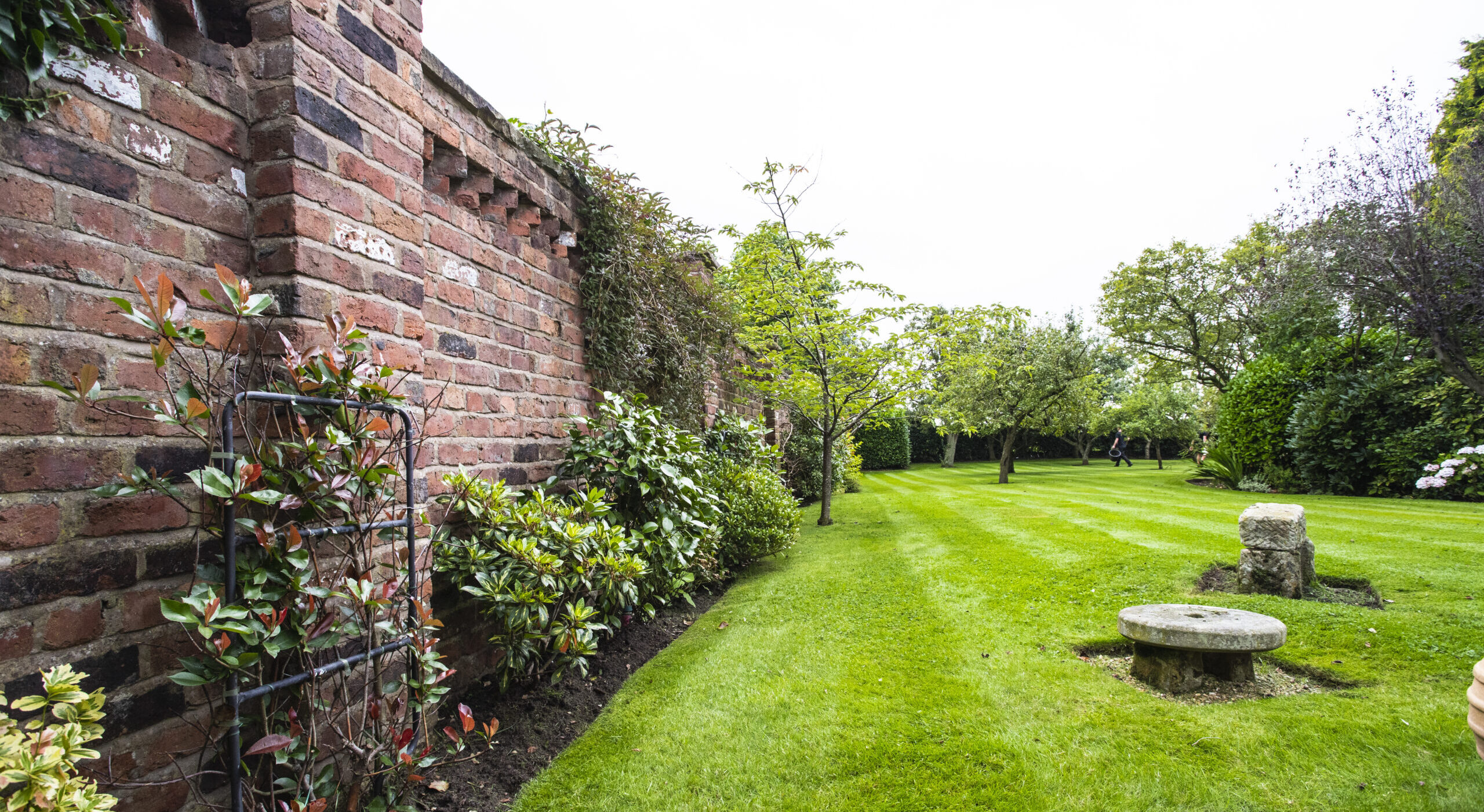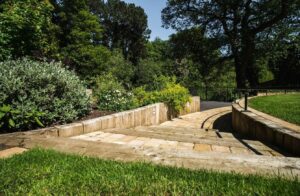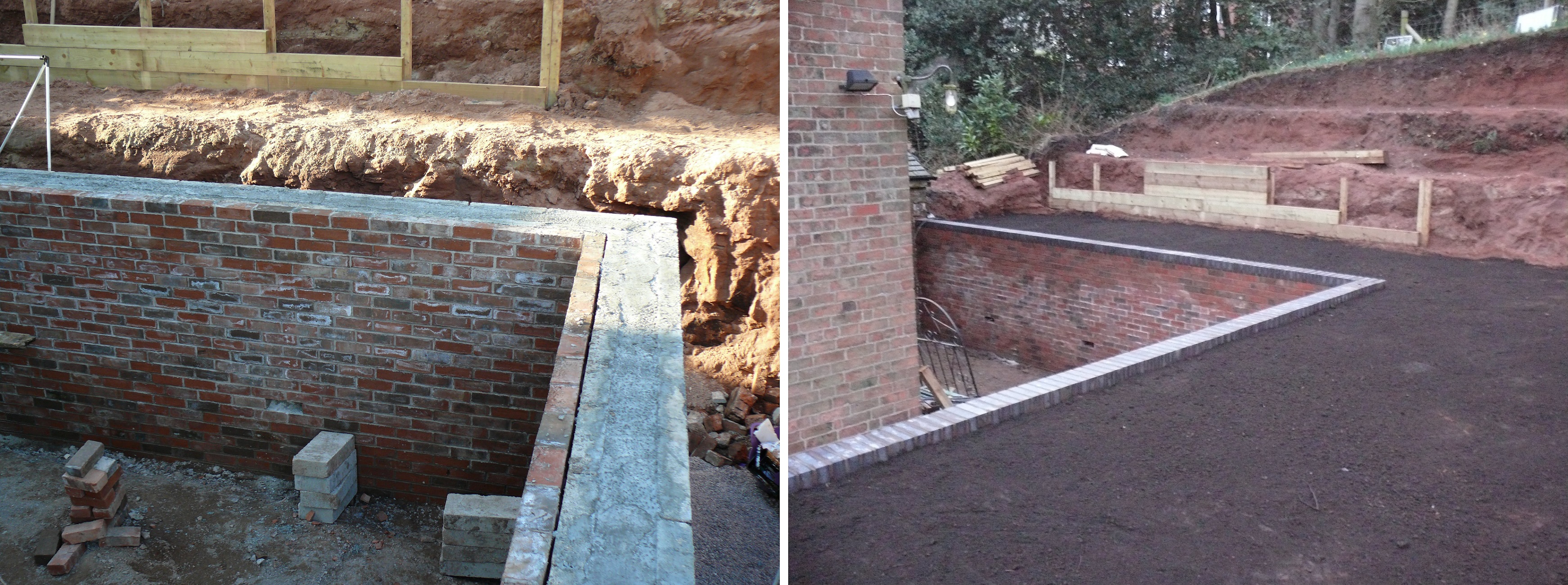Retaining and Boundary Walls
Retaining and Boundary walls can be installed in your garden for many different reasons – they can provide you with additional privacy, act as a retaining wall, or can be installed to create additional interest and structure. At Blue Iris Landscapes, we can construct walls out of a variety of materials, with each one having its own advantages.
Sleeper Walls
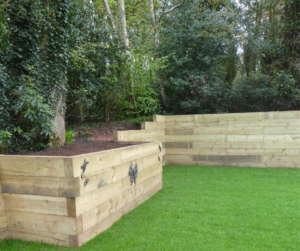
Red Brick Walls
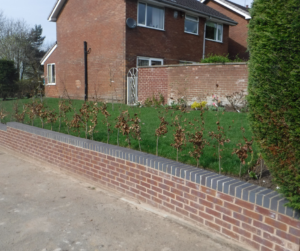
Fairstone Walling
Fairstone walling is most commonly constructed from sandstone, or other similar materials that can bring a traditional, rustic look to your property. This option comes in many different shades and hues (often with very subtle differences) which can help ensure a match, or a contrast, with other features in your garden.
At Blue Iris Landscapes we can work with you to ensure that the wall you choose best matches the aesthetic that you are aiming for. We are always happy to help, so if you would like to discuss this further, contact us today!
The Landscaping Process – Retaining Walls
The concrete foundation was 2m wide, 0.3m deep, and 30m long. It had two layers of steel mesh in to give it additional strength and flexibility. We then inserted rybars at 450mm centres. The first internal skin was a concrete block. There was then a second concrete block wall built creating a cavity of 150mm.
In this cavity, extra reinforcing mesh was inserted, and then the concrete was poured into the cavity to create a 350mm thick solid wall. Finally, we faced the wall with a 40Nm brick and put a soldier course of blue engineering bricks along the top to finish it off. We then had to backfill with hardcore to ensure the soil didn’t move forward with each lift of hardcore compacted down.

